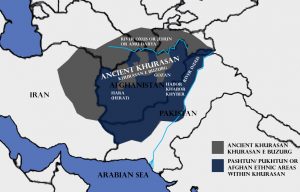See
Where did Islamic State come from, and what does it really want? By Eleri Mai Harris
It even includes an explanation of the apocalyptic beliefs of certain of the ISIS leadership, linking nicely to my previous post:
Musings on biblical studies, politics, religion, ethics, human nature, tidbits from science

See
Where did Islamic State come from, and what does it really want? By Eleri Mai Harris
It even includes an explanation of the apocalyptic beliefs of certain of the ISIS leadership, linking nicely to my previous post:

 Recently I was curious enough to learn what today’s Muslim teachings about the “end times” were to pick up and read two books:
Recently I was curious enough to learn what today’s Muslim teachings about the “end times” were to pick up and read two books:
 Filiu’s work is by far to be preferred for anyone wanting a more complete overview. The 2005 publication has its strengths — I was fascinated by the historical accounts of the various Mahdist movements, in particular the nineteenth century Mahdi of the Sudan of Gordon of Khartoum fame — but it does lose some credibility with its clearly failed analysis of modern extremist Islamist movements, in particular with respect to the questions it was raising in relation to Osama bin Laden. Furnish is determined to focus on Sunni Muslim movements in order to “balance” the much vaster literature on Mahdism among the Shia Muslims. (The Shia dominate Iran but are also significant forces in Lebanon-Syria and parts of Iraq.) That’s a key reason Filiu’s book is to be preferred by anyone interested in Muslim end times teachings more generally.
Filiu’s work is by far to be preferred for anyone wanting a more complete overview. The 2005 publication has its strengths — I was fascinated by the historical accounts of the various Mahdist movements, in particular the nineteenth century Mahdi of the Sudan of Gordon of Khartoum fame — but it does lose some credibility with its clearly failed analysis of modern extremist Islamist movements, in particular with respect to the questions it was raising in relation to Osama bin Laden. Furnish is determined to focus on Sunni Muslim movements in order to “balance” the much vaster literature on Mahdism among the Shia Muslims. (The Shia dominate Iran but are also significant forces in Lebanon-Syria and parts of Iraq.) That’s a key reason Filiu’s book is to be preferred by anyone interested in Muslim end times teachings more generally.
A reassuring message that comes through is just how unimportant are teachings about last days and end time apocalypse in the political and everyday thinking of Muslims generally. As among Christians (and my impression is that even more-so than among North American Christians) the overwhelming majority of Islamic teachers and general body of believers tend to look down upon minorities in their midst who get too carried away with apocalyptic speculations. Both books were published before Islamic State burst on the scene in 2014 but little that I have read about IS changes this overall balance of interest.
Of interest to me were the sources of the various apocalyptic beliefs. Comparable Christian beliefs are taken from canonical sources like the books of Revelation and Daniel. These are generally interpreted through the dispensationalist concepts originating with the Scofield Reference Bible. Add a touch of Hal Lindsay and maybe a little Nostradamus for the most extreme and that’s basically it. Islamic apocalypticism is more eclectic by spades. Much of it even draws upon the Christian sources just mentioned! There are Islamic texts, certain hadiths, that do form the basis of Muslim apocalyptic but they are relatively light on with respect to details and narrative flow.
As for dates, 1979 was a turning point for the Islamic world.
For the significance of 1979 compare Jason Burke’s analysis of the rise of global Islamic militancy. Two Vridar posts discussing Burke’s explanation:

The triple shocks of 1979 were a turning point although various clear ideas of what to make of these events did not coalesce overnight. This period was the beginning of the fifteenth Muslim century and nothing eschatalogical had been foretold of this period so it took a little while to reinterpret and understand anew various prophecies. Afghanistan and Iran may look remote to Christians but they are the centre of Khurasan, a “mythical land” long associated with Afghanistan and where the Messiah’s appearance was foretold.
I could not fail to be interested in various prophetic views of Jesus. They vary from Jesus returning to condemn everyone who failed to convert to Islam to Jesus inspiring a special tolerance and place for Christians. Another reminder that the Muslim religion is anything but a monolith.
First comes the Antichrist to the land of Sham, or Syria. Other prophecies locate him in Khurasan. Continue reading “Jesus in the Muslim Apocalypse”